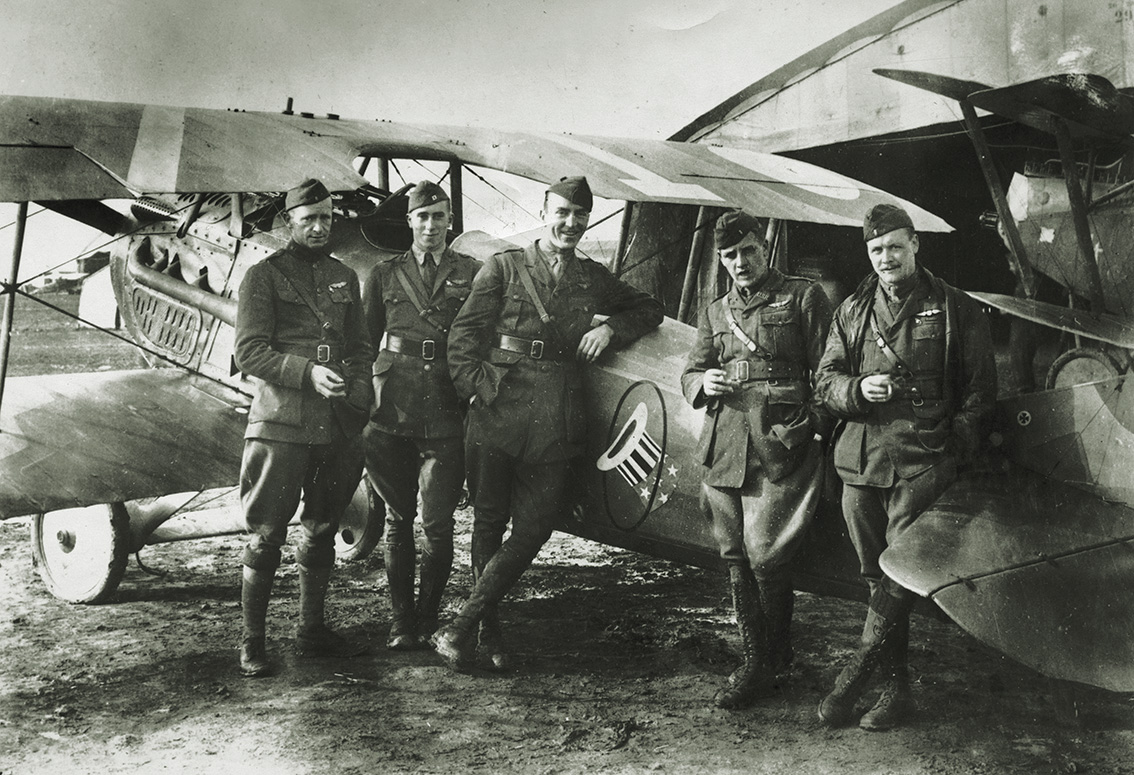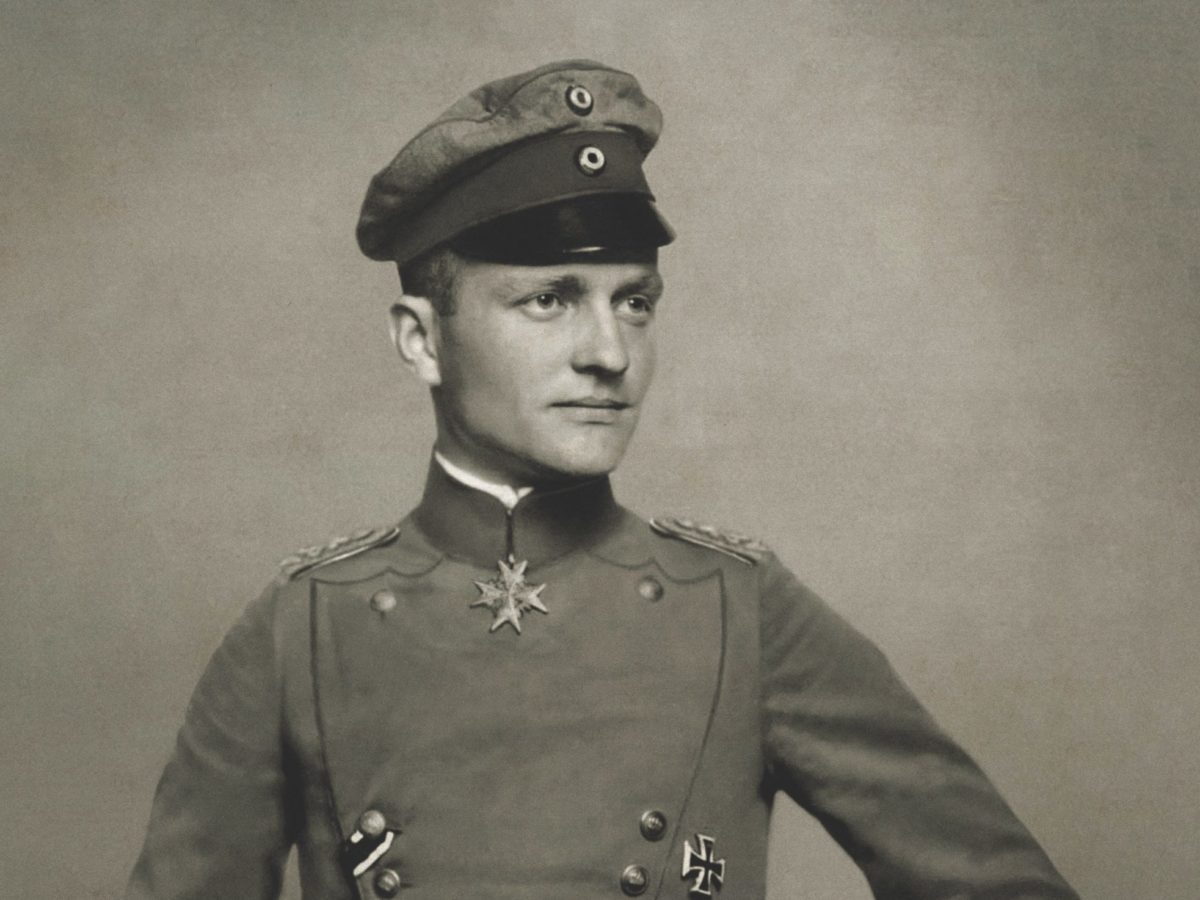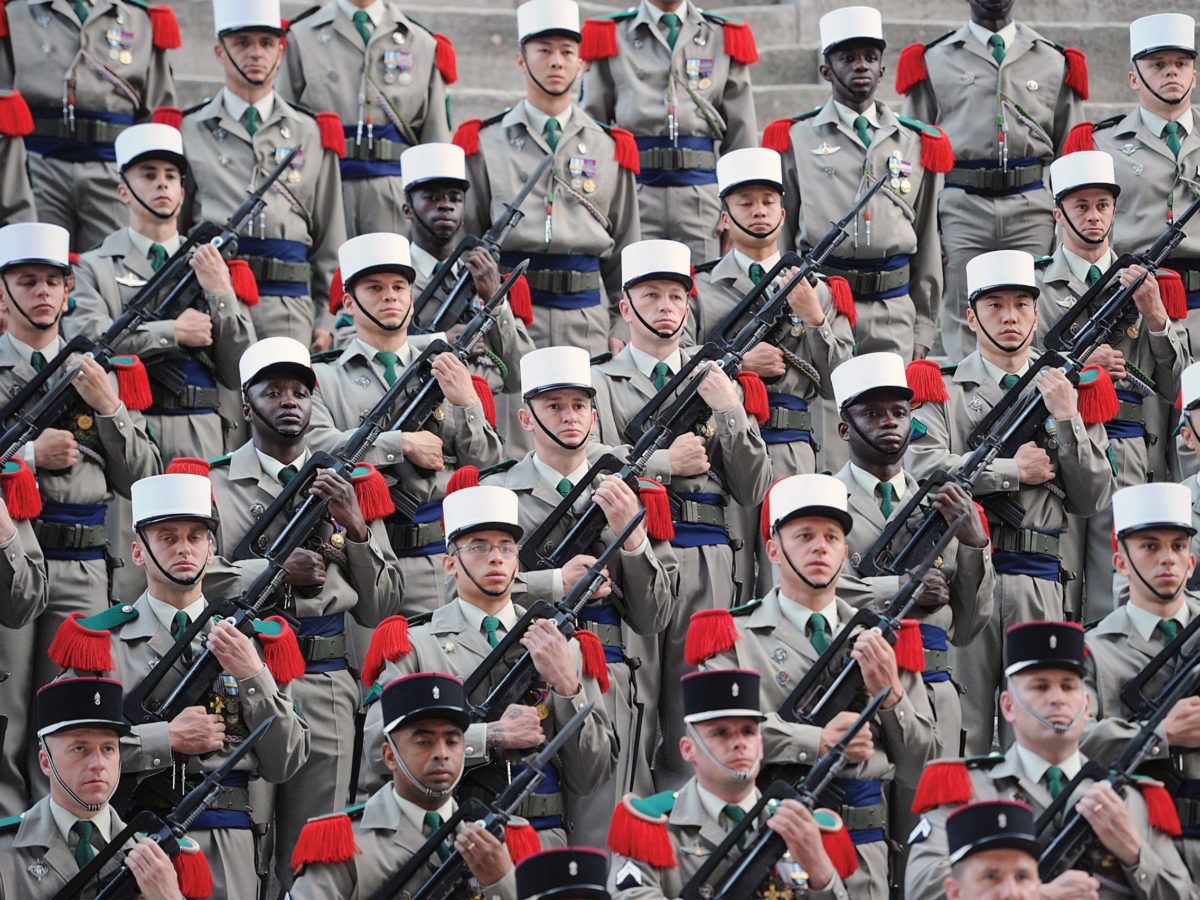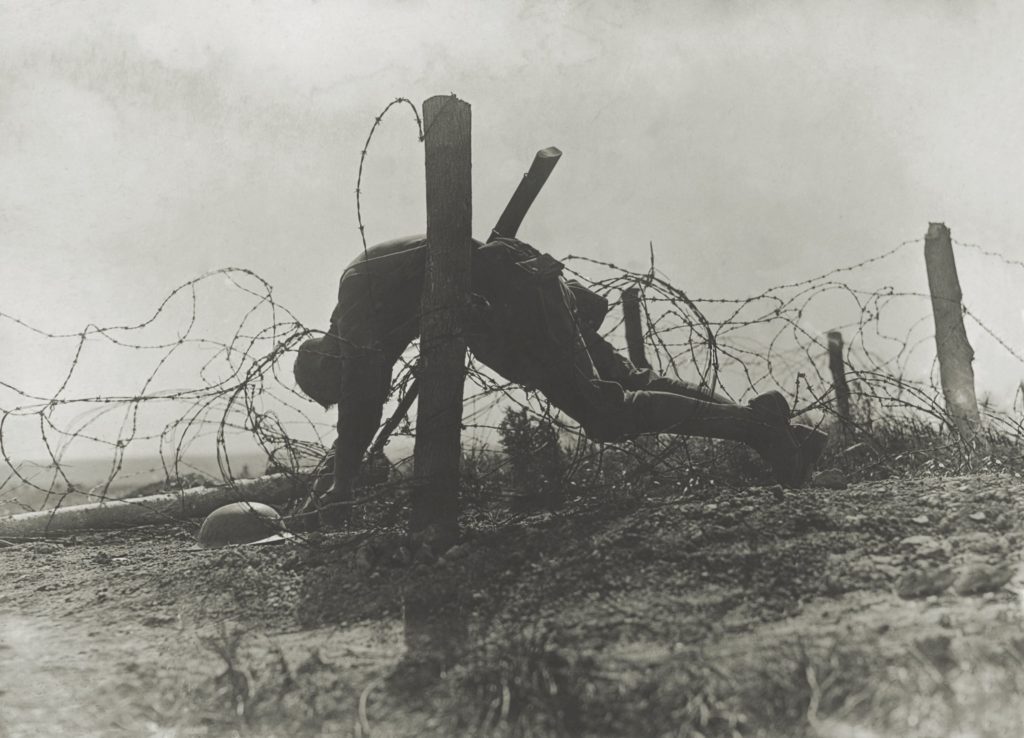One of the great paradoxes of humankind is its capacity for combining destruction with creativity in the wars in which it engages. In the case of World War I aircraft, the artwork that their crews devised had a function beyond mere self-expression. At a time when only larger, more powerful aircraft could carry radios, unit markings were a means of recognition and identification in the air.
France, ever the trendsetter in fashion, established a principle that was followed to various degrees by its allies, especially the Americans. An agreed-upon escadrille (squadron) insignia was painted or stenciled on the fuselage side, with an Arabic numeral ahead or aft of it to identify the individual pilot.
Famous French Emblems
There were a handful of exceptions to that basic pattern, such as escadrille N.103, whose personal aircraft were identified by Roman numerals aft of its stork insignia, or the famous N.124 “Lafayette,” each of whose pilots sported a personal motif such as an initial, a monogram, a band, or a star aft of the Indian head.
Recommended for you
Also unusual were the different numbers and colors of fuselage bands to identify the crews of Br.128, whose emblem was a red scarab beetle. Sop.63’s Sopwith 1.A2s sported a parrot, with different-colored feathers for each plane, while similarly those of Sop.287 had a court jester, each with a different colored cowl.
The most famous emblem among French fighter units was the stork, a bird long known for its migrations from, and always back to nest in, the chimneys of Alsace—a winged metaphor for France’s ambition of returning to Alsace since its annexation by Germany in 1871. Captain Antonin Brocard, commander of N.3, and an artistically inclined observer, Adjutant Charles Borzecki, devised the stork and a stencil that allowed it to be applied in a variety of colors, depending on the light or dark fabric on a particular Nieuport’s fuselage.
With 175 confirmed victories to its credit, Spa.3 (as it was designated when its Nieuports were replaced by Spads) was the highest-scoring squadron in the French air service and produced the most aces, including second-ranking French ace Georges Guynemer. After N.3 was made the flagship squadron of a fighter group to achieve local air superiority in November 1916, all the other escadrilles assigned to Groupe de Combat 12 replaced their existing insignias with storks in different attitudes of flight. Several underwent changes in the course of the war; soon after N.26 joined GC.12, it replaced its burning torch with a stork designed by a Japanese pilot in its ranks, Captain Kiyotake Shigeno, whose stork, by no coincidence, looked more like a crane.
Some escadrilles acquired their insignias from recognized artists of the age. When Captain Georges Matton and his executive officer, Lieutenant Armand de Turenne, conceived of a crowing rooster head for N.48, artist Jacques Nam worked up the definitive version. A Swiss volunteer in the unit, Jacques Roques, had the face of a young lady as a personal marking on his Spad VII hand-painted by his Parisian friend, artist Georges Lepape.
The commander of Spa.78, Captain Armand Pinsard (27 victories), flew Spad VIIs with black fuselages, on the sides of which were a “white leopard of Borneo,” and another in gold, designed by Théophile Steinlen, a Swiss-born painter who had settled in France to become a leading illustrator of art nouveau. In April Steinlen was painting black leopards on the fuselages of Spa.78’s other aircraft, with Arabic numerals for individual identification. Spa.173 received its bird of paradise marking from Jean-Gabriel Domergue. The Bréguet 14.B2s of Br.129 had a rabbit carrying a vagabond’s pack, and the Spad XVI two-seaters of Spa.bi.278 had a laughing rabbit, both created by Benjamin Rabier, an illustrator of children’s literature. Cartoonist Marcel Jeanjean provided the clown insignia of Salmson 2A2 escadrille Sal.252.
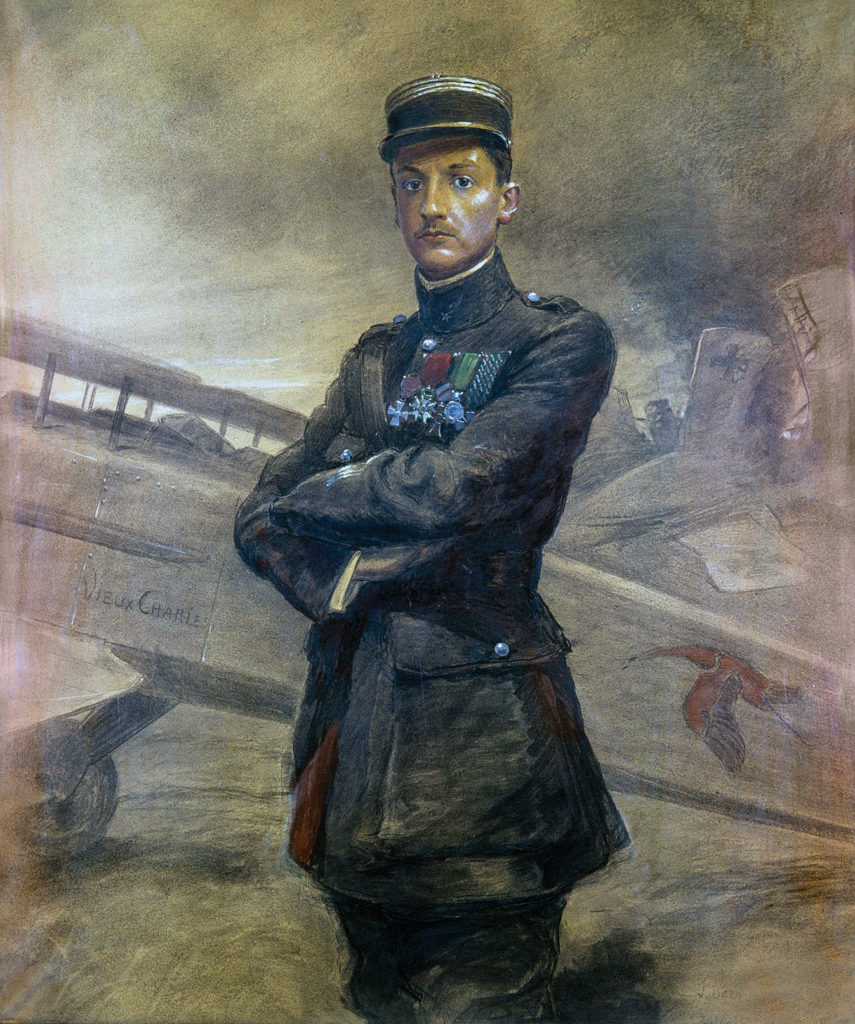
On at least two occasions the artistic refinement came from American volunteers of the Lafayette Flying Corps. In November 1916, N.124 adopted the sobriquet of “Escadrille Lafayette” and an Indian head insignia based on the logo of the Savage Arms Company. In April 1917, however, two pilots who had been architects before the war, Edward F. Hinkle and Harold B. Willis, decided the emblem was too bland.
A Connection with Kellogg’s Corn Flakes
“It was a rather round Indian head,” Willis said in a postwar interview, “and Hinkle and I thought we could do one that would be a little more distinctive from a distance. Also we wanted to achieve an insignia that, from extreme distances, would give out a blotch of red, white and blue, even if you couldn’t make out the Indian head.”
The result, for which the two men designed a stencil, appeared on Spa.124’s Spad VIIs until February 1918, when the Escadrille Lafayette was transferred en masse into the U.S. Army Air Service as the 103rd Aero Squadron. Not only did that “Sioux” head remain as the 103rd’s emblem, but when it became the nucleus of the 3rd Pursuit Group, three variations on Indian heads were adopted by its three other components, the 28th, 93rd, and 213th Aero squadrons (in clear emulation of the stork variations of French GC.12 and GC.21, whose five escadrilles were identified by diagonal fuselage bands in different color combinations).
At the end of 1917, escadrille Spa.81 adopted a greyhound as its insignia. Initially it took several hand-painted forms, but in March 1918 the squadron got an American pilot through the Lafayette Flying Corps, Sergeant James Alexander Bayne, who had attended the Chicago Art Institute and, among other things, had designed the Kellogg’s Corn Flakes package before the war.
“Alec Bayne was engaged in the Foreign Legion for the duration of the war,” said Spa.81 pilot and five-victory ace Pierre Cardon in an interview. “An art student and a very good designer, it was he who improved the design of our greyhound insignia and made up the stencil to reproduce it on all Spa.81 airplanes….” Tragically, Bayne was accidentally killed while test-flying a newly delivered Spad XIII on May 8.
How French Plane Fashion Influenced Americans
The basic format of French aircraft eventually became the template for marking the aircraft of its allies. In 1917 Italy’s units were identified by either their numbers, as was the case with the 76th, 78th, 81st, and 82nd Squadriglie de Caccia, or common insignias like the 77th Squadriglia’s red heart and the 91st’s griffon. As early as 1916, Russian squadrons were sporting insignias, most notably the black skull and crossbones on the white rudders of fighters of the XIth Corps Air Detachment, and the white skulls and crossbones on the black rudders of the XIXth Corps Air Detachment.
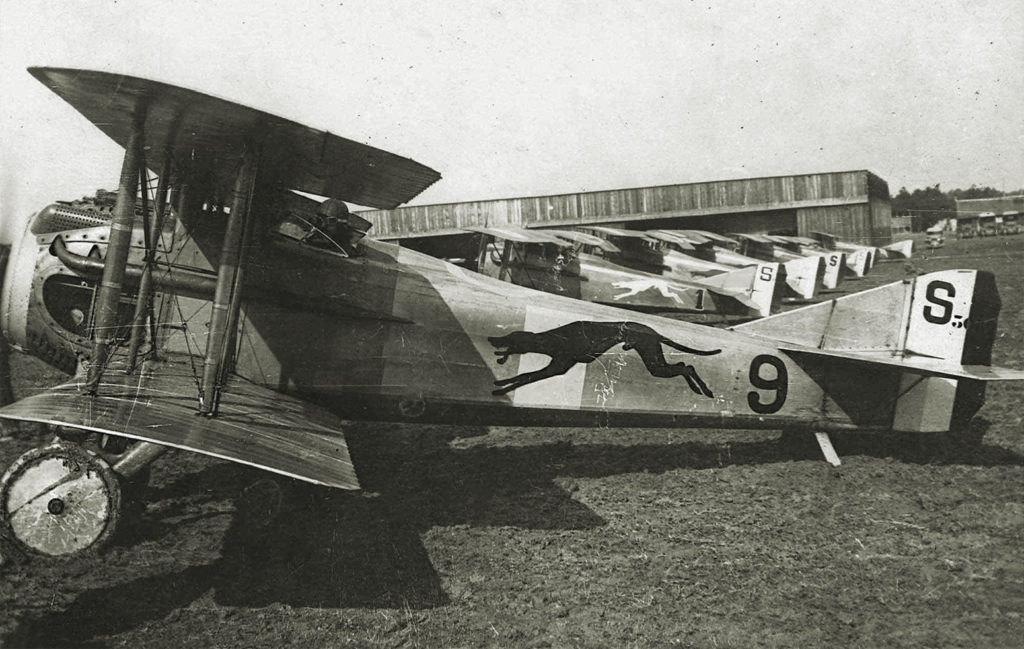
The most regimented user of the French-inspired marking system was the U.S. Army Air Service. By August 1918 the 103rd Aero Squadron had seen the last of its personal motifs replaced by yellow Arabic numerals, and all squadrons from then on combined a unit insignia with a different colored number on the fuselage sides, and the upper and lower wings, often supplemented with different colored bands on the upper wing opposite the number. Additionally, pursuit squadrons that were subdivided into flights often had them identified by cowlings painted red, white, or blue. Personal markings were usually limited to names inscribed under the cockpit.
Besides the Native American insignia of the 103rd Aero Squadron, the most famous American emblem was, according to Lafayette Flying Corps pilot John W. F. M. Huffer, a personal marking—a stovepipe hat marked in red, white, and blue, as worn by Uncle Sam—that he used while with escadrille N.62, but introduced to the 94th Aero Squadron when he was given command of it in March 1918. On March 28, Major Raoul Lufbery led First Lieutenants Douglas Campbell and Edward Rickenbacker on their first armed patrol over the front, followed the next day by First Lieutenants Thorne C. Taylor and John Wentworth.
Upon their return to base at Gengoult, the squadron surgeon, Captain Paul H. Walters, raised a cheer by proposing that since the 94th’s hat was now “in the ring,” it be identified accordingly. Wentworth, an architect in civilian life, developed the definitive form of the insignia, with Huffer’s Uncle Sam hat flying through a red band. When the 94th became the basis around which the 1st Pursuit Group was organized, its sister unit, the 27th Aero Squadron, adopted a “screaming eagle,” the 95th used a kicking mule inspired by its equine mascot Jake, and the 147th used a rat terrier that its commander, Major Geoffrey H. Bonnell, remembered from his days in the Royal Flying Corps.
British reserve—And German “Flying Circuses”
In stark contrast to France and most of its allies, Britain’s Royal Flying Corps came to favor a subdued marking system that discouraged self-expression on its aircraft. Aside from the national markings, squadrons were represented by bars or geometric figures in white against an olive drab finish, with letters or Arabic numbers for the individuals and red, white, or blue wheel hubs to represent flights.
The Royal Naval Air Service often indulged in colorful personal markings, but that ended on April 1, 1918, when the RFC and RNAS were amalgamated into the Royal Air Force.
As for the enemy, the first German identification system is alleged to have come about when Manfred Freiherr von Richthofen, commander of Jagdstaffel 11 and then Germany’s top living ace, first painted his Albatros D.III red all over.
When his men protested that he would become a marked man in the sky, he and they worked out a sort of compromise, with all aircraft in the Staffel given red noses and wheel hubs, and individual fuselages or tails painted in colors of the pilot’s choice.
Variations on that theme became the norm in most German fighter squadrons, using colors representing the army regiment, region, or city from which the pilot came, or even the family coat of arms. Collectively, they presented the Allies with a colorful array of opposition that explains why the British referred to their most proficient units as “flying circuses.”
By late 1917 Austria-Hungary had come to emulate the Germans in principle, although most of its Fliegerkompagnien limited their unit colors or markings to the wheel hubs.
The most successful or famous units to emerge from the first worldwide air war have sustained the traditions they established through a number of conflicts since. The emblems and the heritage they represent live on, albeit smaller or in more subdued colors, on warplanes today.

